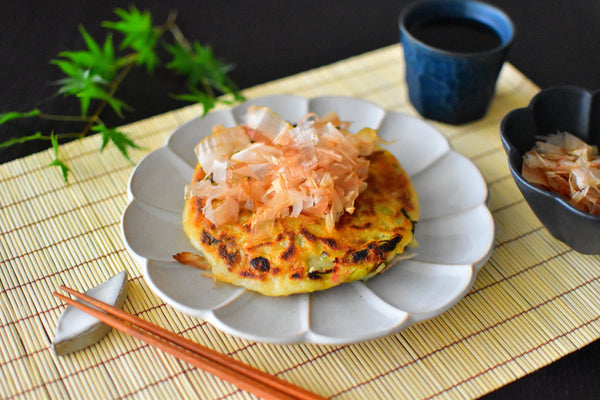
How To Make Negiyaki (Japanese Scallion Pancake)
Negiyaki was created in Osaka and is said to be the origin of Okonomiyaki. This dish remains popular along with Okonomiyaki at specialty restaurants, especially in the Kansai area.
Although Negiyaki looks similar to Okonomiyaki, there are some differences between the two. Let’s look at each difference.
First, the main ingredient: The main ingredient in Okonomiyaki is cabbage, while Negiyaki is made with a generous amount of green onions (Negi).
Secondly, the basic batter: Usually, Okonomiyaki is made with a one-to-one ratio of all-purpose flour to water. In contrast, Negiyaki uses a one-to-one (or more) ratio of flour to water, resulting in a lighter texture that highlights the Negi more clearly.
Thirdly, Negiyaki is enjoyed with Dashi soy sauce or regular soy sauce. This relates to its history—Negiyaki was created before Okonomiyaki sauce existed, so it was traditionally enjoyed with Japanese sauces, such as soy sauce. I recommend enjoying Negiyaki with Dashi soy sauce or regular soy sauce, even though you might be tempted to use Okonomiyaki sauce based on its appearance.
When you cook Negiyaki, you have two options: Nose-yaki (also known as Kasane-yaki) or Maze-yaki. Maze (mixing)-yaki is made by mixing the ingredients and batter together before cooking, whereas Nose (placing on)-yaki is made by preparing the ingredients and batter separately, then combining them during cooking. In this recipe, we are using the Nose-yaki method.
Since the ingredients are simple, you can add other ingredients, such as beef tendon stew (Sujikon), scallops, shrimp, or squid. As for the main ingredient, Negi, you can use green onions or the green part of a Japanese leek. We are using Kujo Negi, a type of green onion native to Kyoto.
If you are craving Okonomiyaki but want something lighter, this dish is for you. It’s also perfect for filling your stomach when you’re hungry during snack time. Try our Negiyaki recipe and enjoy it with your favorite ingredients.
Overview
Prep time: 10 mins
Cook time: 15 mins
Total time: 25 mins
Total servings: 1
Difficulty: Easy
Ingredients
- 80 g All-Purpose Flour
- 200 ml Water
- 1 tsp Powdered Dashi Soup Stock
- 1/2 Tbsp Cooking Oil
- 50 g~ Green Onion or Green Part of Japanese Leek
- 40 g Sliced Pork Belly
- 5 g Red Pickled Ginger
- 1.5 Tbsp (7g) Tempura Bits
- Dashi Soy Sauce or Soy Sauce, as needed
- 3 g Dried Bonito Flakes (Katsuobushi)
Expert's Tip
Instructions
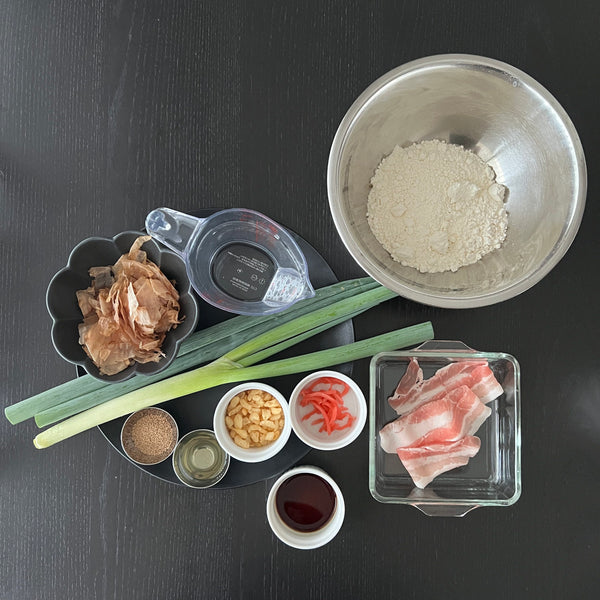
1) Gathering the Ingredients
2) Cutting the Negiyaki Fillings Into Small Pieces
3) Preparing the Negiyaki Batter
4) Cooking Negiyaki
5) Flipping the Negiyaki
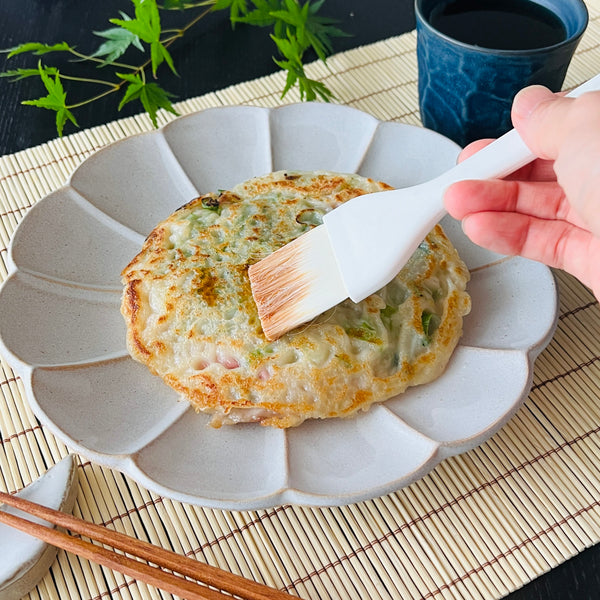
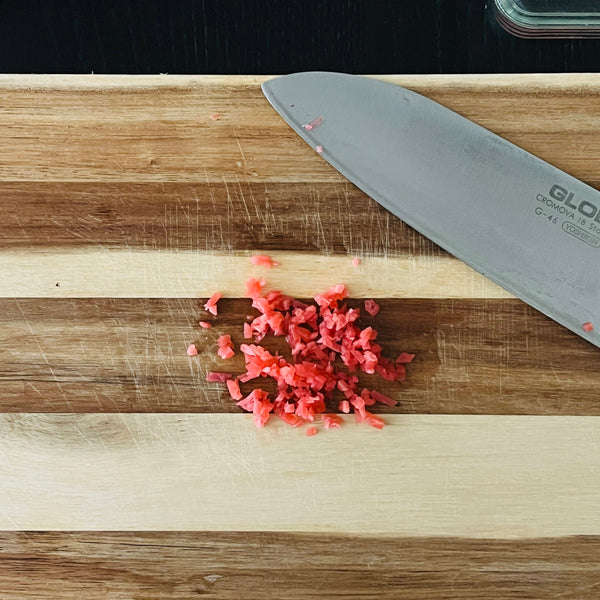
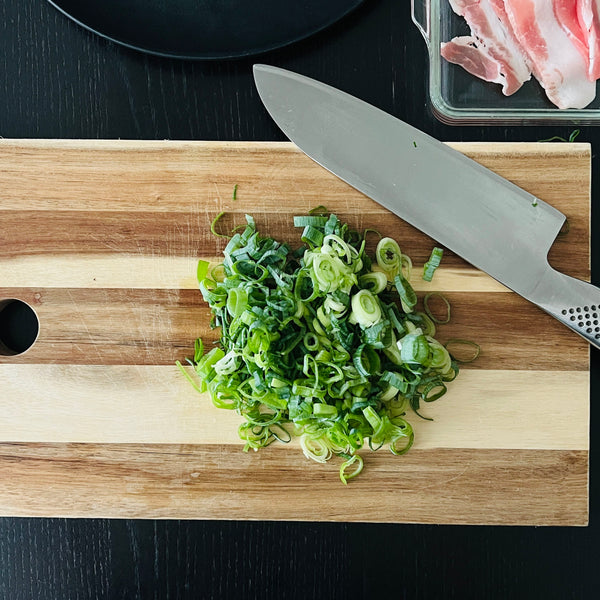
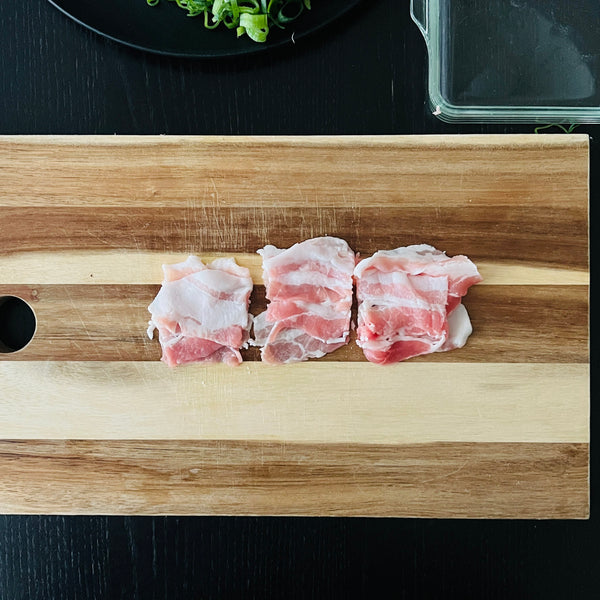
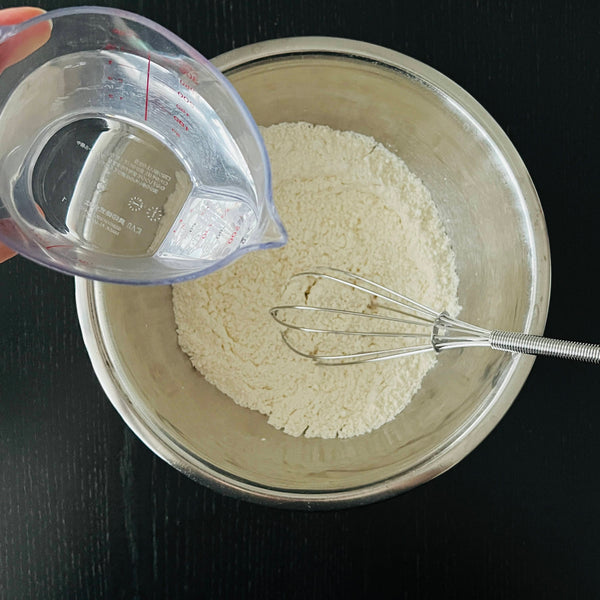
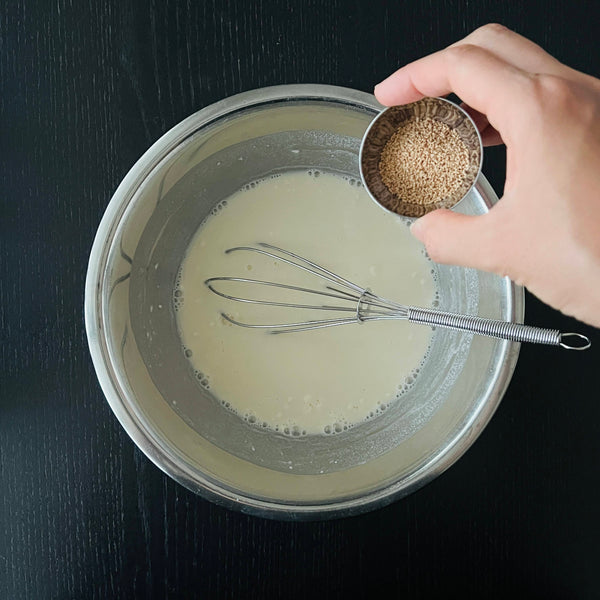


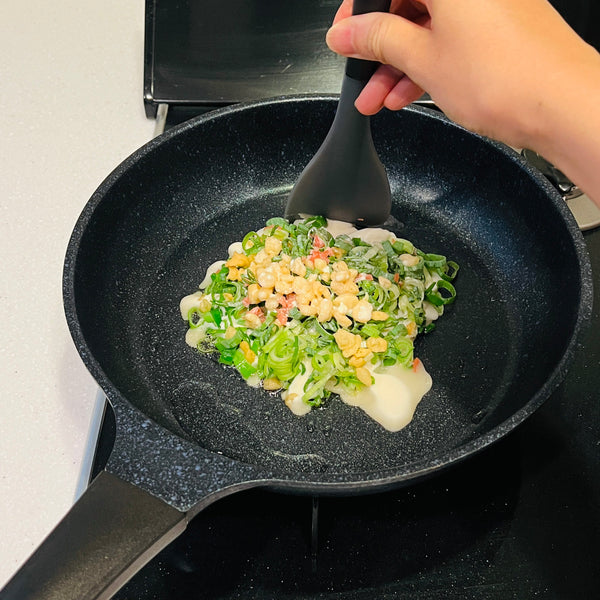

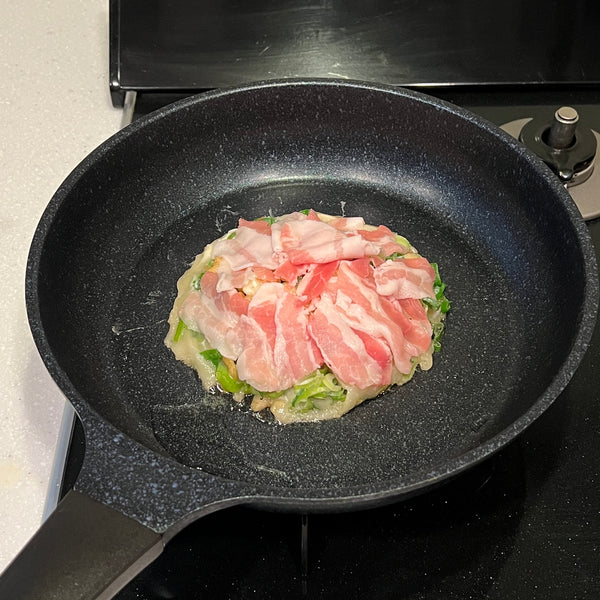

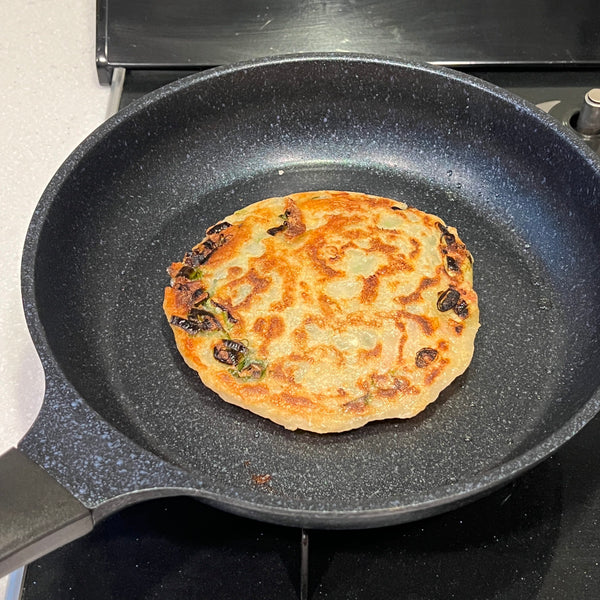



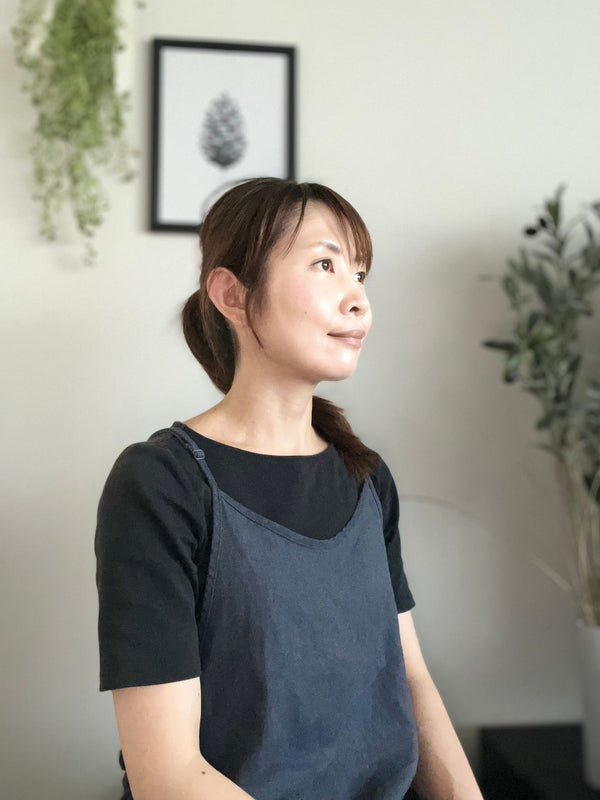
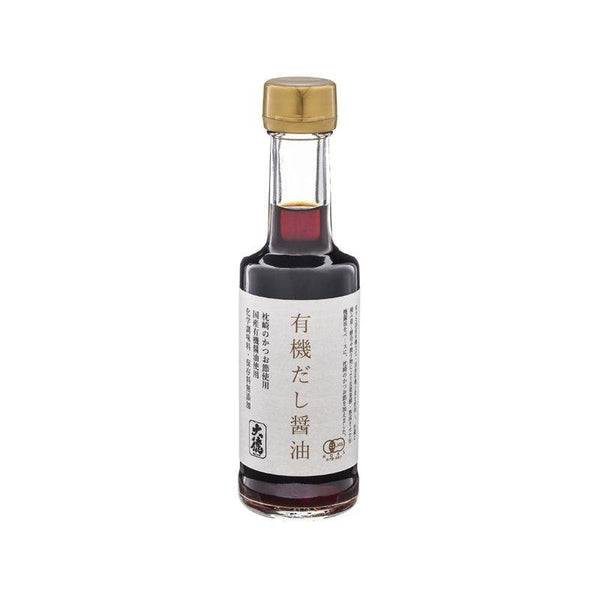
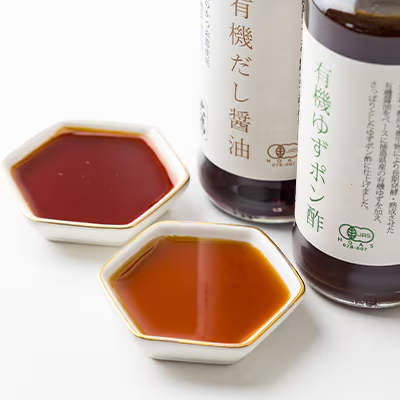
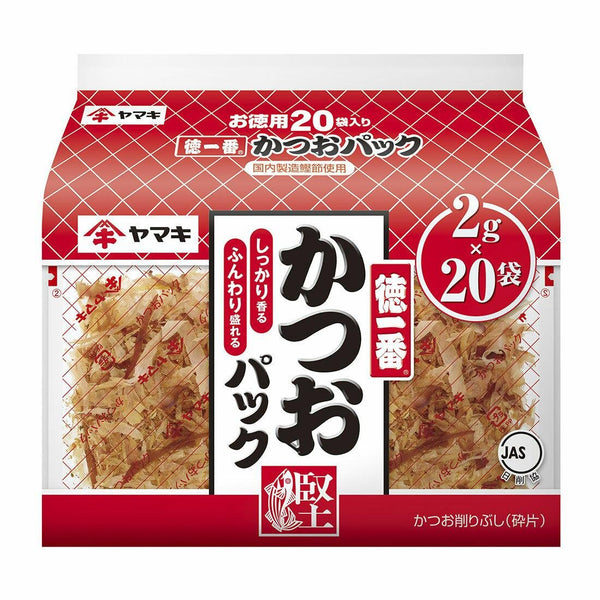
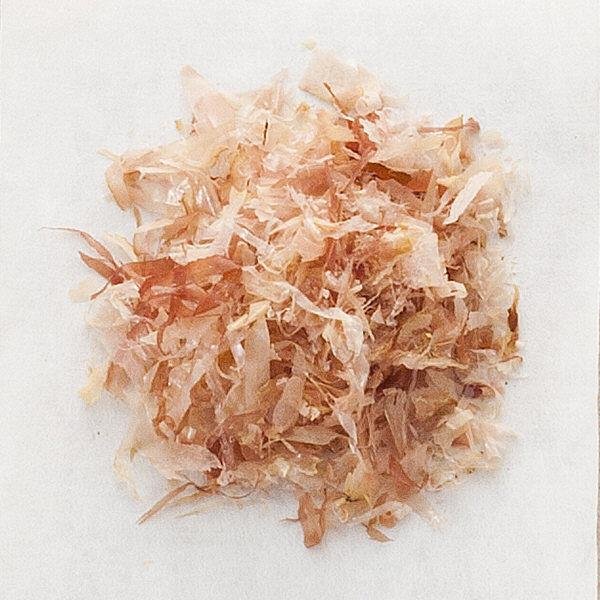
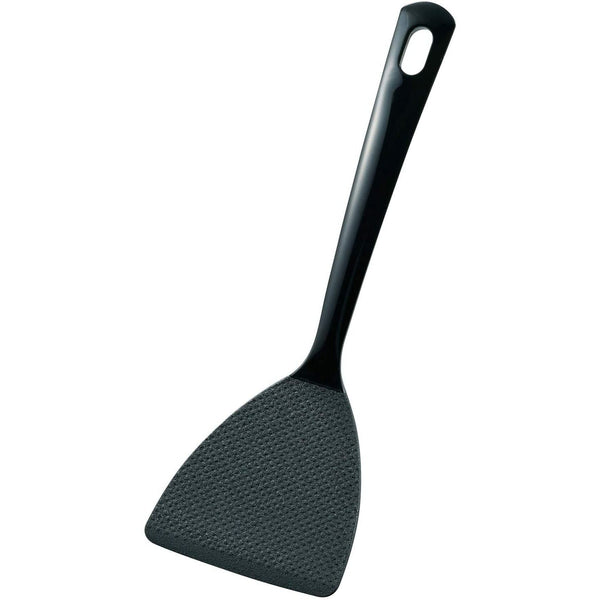
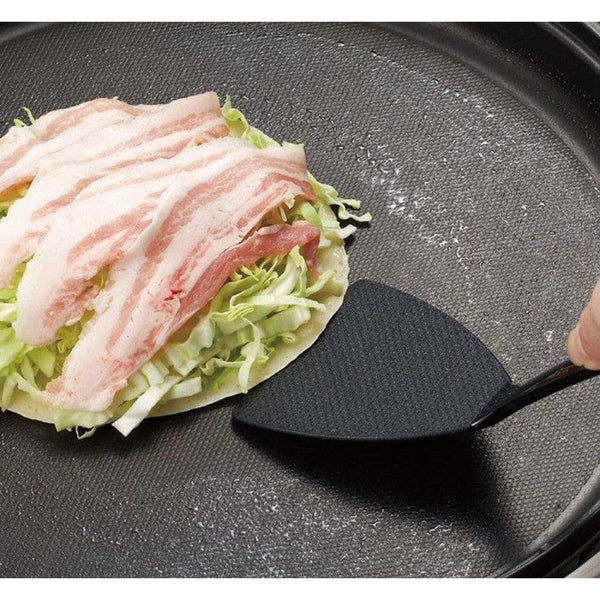
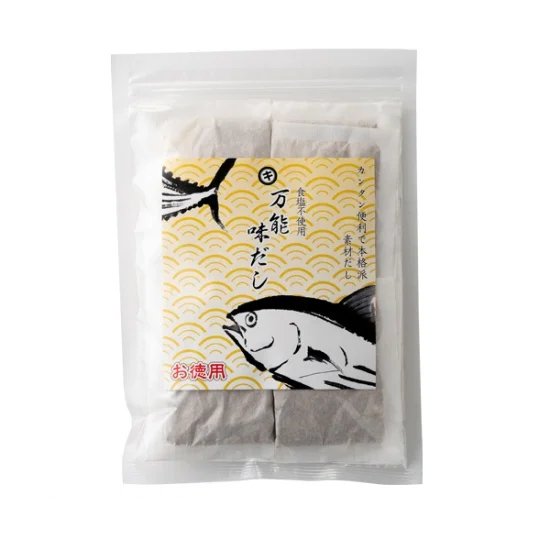
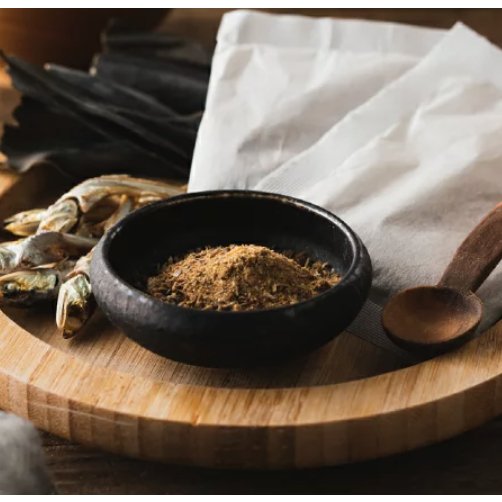
0 comments